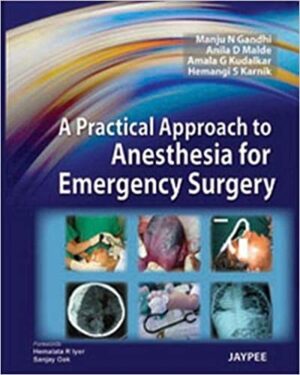Description
The “Handbook of Pediatric Anesthesia” is a valuable and concise resource that focuses on the practice of anesthesia for pediatric patients. Pediatric anesthesia is a specialized field that requires specific knowledge and techniques due to the physiological and anatomical differences between children and adults. This handbook is designed to provide practical guidance for anesthesia providers, including anesthesiologists, nurse anesthetists, and anesthesiology residents, who care for pediatric patients. Here’s an overview of the topics typically covered in such a handbook:
- Pediatric Anatomy and Physiology:
- Understanding the unique anatomy and physiology of pediatric patients, including age-related differences, is essential for providing safe and effective anesthesia.
- Preoperative Assessment:
- Comprehensive preoperative assessment of pediatric patients, including evaluating their medical history, physical examination, and age-appropriate diagnostic tests.
- Anesthesia Techniques:
- Guidance on anesthesia techniques and agents suitable for pediatric patients, emphasizing dosage calculations, drug selection, and administration.
- Pediatric Airway Management:
- Specialized considerations for pediatric airway management, including the management of the pediatric airway, intubation, and ventilation.
- Medication Dosages:
- Proper dosing of anesthetic drugs, analgesics, and other medications for pediatric patients, taking into account their weight, age, and physiological differences.





Reviews
There are no reviews yet.